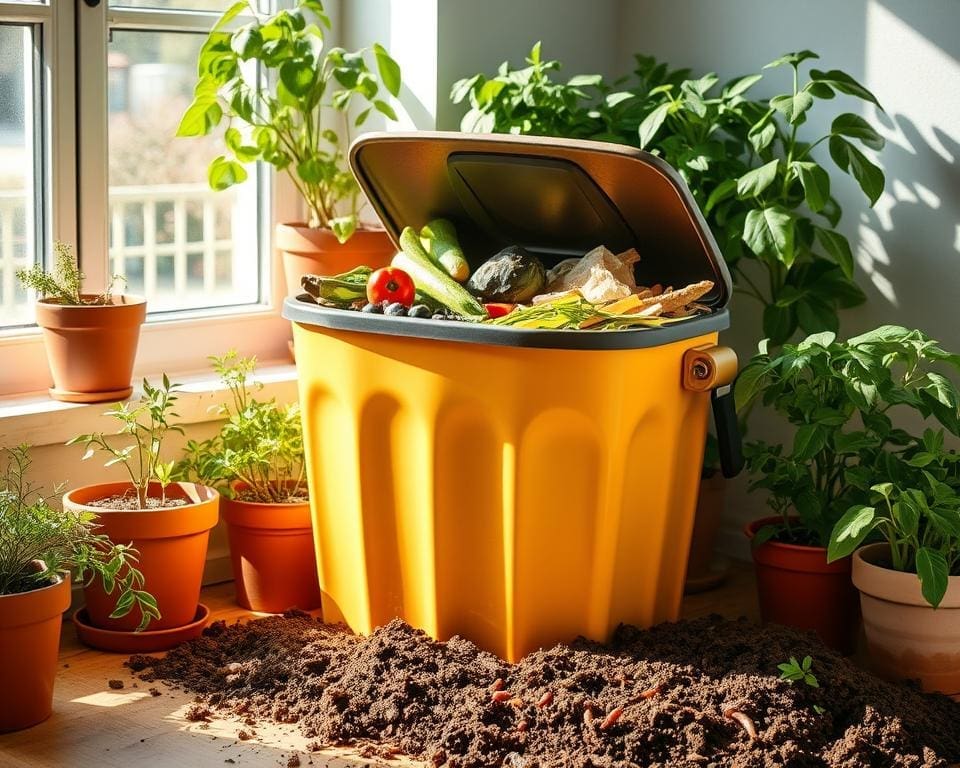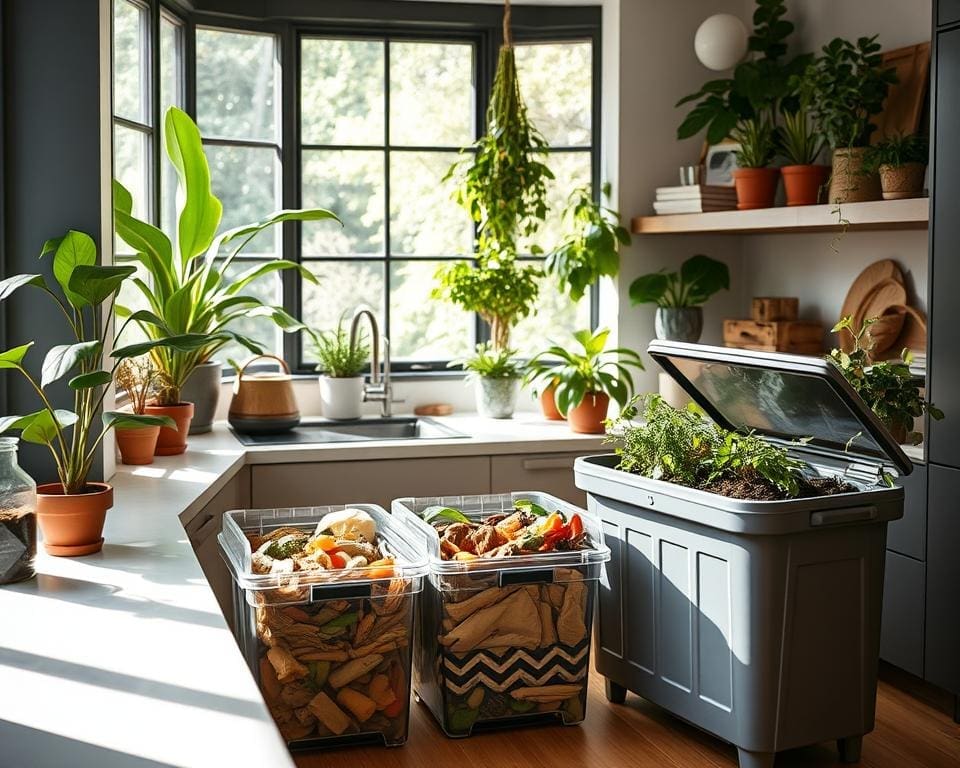In an era where sustainability is more crucial than ever, indoor composting has emerged as a transformative practice for eco-conscious individuals. Indoor Composting Bins for Sustainable Living not only help reduce the staggering amount of organic waste sent to landfills but also empower urban dwellers to cultivate nutrient-rich soil for their beloved plants. With the right eco-friendly composter, you can effortlessly recycle kitchen scraps, turning them into valuable compost while fostering a greener, healthier home environment.
Understanding the Benefits of Indoor Composting
Indoor composting offers a multitude of benefits that contribute to both environmental sustainability and indoor gardening. By embracing this practice, individuals can engage in organic waste recycling, which leads to significant advancements in reducing organic waste that typically ends up in landfills.
Reducing Organic Waste in Landfills
The alarming rise in landfill waste poses a critical challenge for our environment. Many components of organic waste can decompose naturally, yet when buried, they often release harmful greenhouse gases. Indoor composting allows households to directly contribute to reducing organic waste, transforming kitchen scraps into valuable compost instead of allowing them to burden landfills.
Enhancing Soil Quality for Your Indoor Plants
Utilising compost not only supports the notion of organic waste recycling but plays a pivotal role in enhancing soil quality. Compost enriches soil with vital nutrients, fostering a vibrant growth environment for indoor plants. By improving moisture retention and enhancing soil structure, compost assists plants in thriving, leading to a flourishing indoor garden.

Indoor Composting Bins for Sustainable Living
Exploring the various types of indoor composting bins can significantly enhance your eco-friendly practices. Each kitchen compost bin offers unique features that cater to specific needs and lifestyles. Understanding these options allows users to make informed choices aimed at sustainable living.
Types of Indoor Composting Bins Available
Several types of indoor composting bins are currently available, making it easier for everyone to practice composting. Consider the following options:
- Countertop Composters: These compact bins fit conveniently on your kitchen counter, perfect for storing food scraps.
- Worm Bins: Ideal for avid gardeners, these bins use red wriggler worms to break down organic matter efficiently.
- Electric Composters: For those who prefer a more automated approach, electric composters speed up the composting process significantly.
How to Choose the Right Bin for Your Needs
Selecting the right kitchen compost bin involves considering several essential factors:
- Size: Ensure the bin fits your available space and meets the quantity of waste generated.
- Ease of Use: Look for models that simplify the composting process to encourage regular use.
- Odour Control: A good bin should include features that minimise unpleasant smells.
- Maintenance: Opt for bins that offer straightforward cleaning and upkeep features.
The Best Kitchen Compost Bins: Features & Recommendations
Choosing the ideal kitchen compost bin can greatly enhance your composting experience and contribute positively to the environment. Various features and recommendations will guide you in selecting a bin that suits your lifestyle and needs.
Size and Capacity Considerations
When assessing a kitchen compost bin, size and capacity are crucial factors. If you live in a smaller space like a flat, opt for a compact design that fits comfortably under your sink or on your countertop. Evaluate your household’s waste generation to determine the volume you will need. Some excellent options range from 1.5 to 6 litres, balancing functionality with spatial constraints.
Materials and Durability
The materials used in a kitchen compost bin play a significant role in both durability and aesthetics. Common materials include:
- Stainless Steel: Known for its longevity and resistance to odours.
- Plastic: Lightweight and often comes with additional venting options; however, ensure it is BPA-free.
- Bamboo: An environmentally friendly option that offers a stylish touch.
Prioritise bins that are easy to clean and maintain, as this will encourage regular use. Evaluate the user reviews to identify models that withstand daily wear and tear effectively. The right combination of materials will enhance not only the bin’s lifespan but also how it complements your kitchen décor.
Setting Up Your Eco-Friendly Composter
Creating an eco-friendly composter in your kitchen is an empowering step towards sustainability. The first aspect to consider is the location of your compost bin. Choose a spot that is easily accessible for daily use, such as under the sink or in a utility cupboard. It’s crucial to place the composter away from areas prone to strong odours and pests. Proper ventilation will also help keep any potential smells at bay, making your composting experience more enjoyable as you embark on the journey of setting up compost.
Location: Finding the Perfect Spot
When determining the best location for your compost bin, think about accessibility and cleanliness. The ideal spot should not interfere with your daily activities, yet remain close enough to facilitate easy disposal of kitchen scraps. Additionally, ensure that the area is well-ventilated and not exposed to direct sunlight, which can accelerate decomposition too quickly and generate unpleasant odours. Selecting the right location is vital for maintaining the enthusiasm when setting up your eco-friendly composter.
What to Compost: A Guide to Kitchen Scraps
As you begin to populate your composter, knowing what kitchen scraps to include is essential. Common items such as fruit and vegetable peels, coffee grounds, eggshells, and even certain paper products can be composted. Avoid adding meat, dairy, and oils, as these can attract pests and create unpleasant smells. By understanding the types of kitchen scraps suitable for composting, you empower yourself to minimise organic waste effectively. Embrace the art of composting and contribute to a sustainable lifestyle while enriching your indoor gardening efforts.









